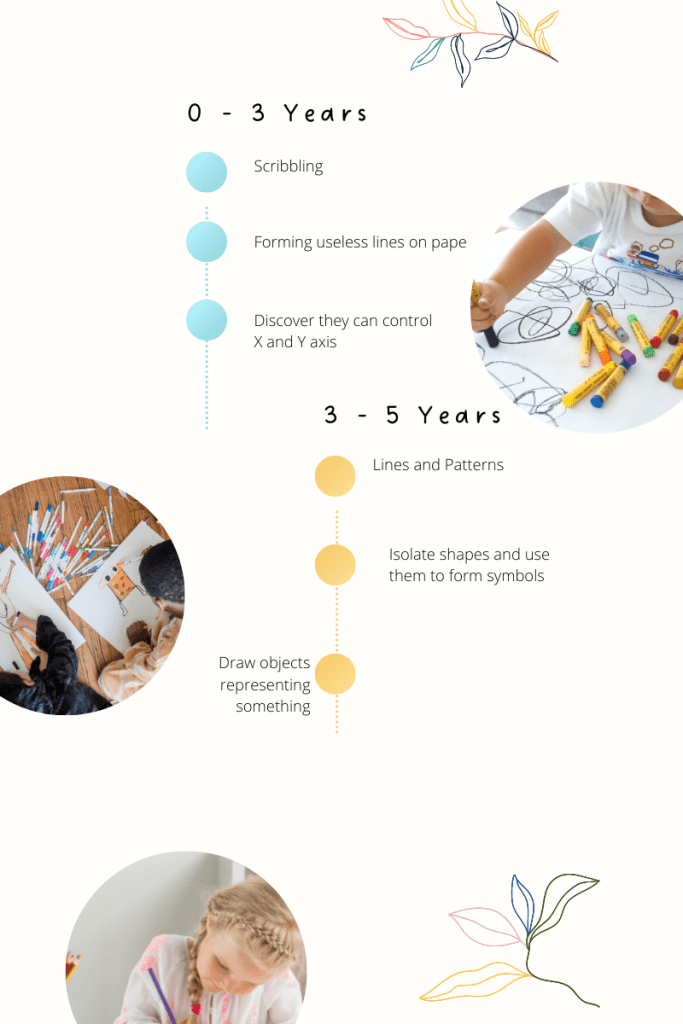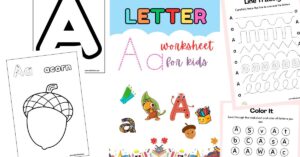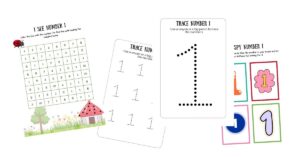There is no question that drawing has numerous benefits for children. For instance, research has shown it helps in brain development, gross and fine motor skill development, and a form of self-expression. At certain ages, children will have different drawing skills. How well 7-year-old draws will differ from how well a 2-year and 17-year-old draws.
A child’s drawing skill depends on their exposure to drawing tools, experience, and general interest in art. There are drawing development stages that all children go through, from when they are born to when they become novice artists.
As they progress from one stage to the next, your child learns different skills, becoming better and better.
So, …
When Do Kids Start to Draw?
Children start to draw when they are between 12 and 18 months. Around this age, your child can sit by themselves, hold an object in their hand and move it from one side to another. If they show these signs earlier, you can introduce them to drawing materials to see what they do with them.
Remember, though. Your bub is still in the “everything goes to the mouth’ stage, so make sure the drawing materials you provide are safe. Now, let’s explore the different drawing development stages and how well your child should draw at a certain age.

1. Scribbling 0-3 years
Scribbling is more than forming useless lines on paper. In fact, for kids this age, there is very little difference between drawing and learning. When they draw, they learn. Your child experiences the power of cause-and-effect by learning the collaboration between their hand holding the crayon, moving, and making the line on the paper. Such a delight for little kids!
This stage is usually the start of hand-eye coordination. Your kid also discovers they can control the X and Y axis and use materials differently. Eventually, they learn that as lies overlap, they form shapes, which prepares them for the next stage.
Use fat crayons and let your child hold them as they see fit. Most use their fist, and that’s ok.
2. Lines and Patterns 3-5 years
Your child will start to control their scribbles because their fine motor skills have improved. They can isolate shapes and use them to create symbols as they develop their own language. Kids will start including circular motions, more lines, zig-zags, crosses, and dots in their art and even start having a pencil grip.
Sometimes, their work will remind them of a familiar object, so don’t be surprised when they rush to tell you what they drew. They will also want to pick out colors and use their imagination. For instance, your little one-way can draw a brown sky and pink soil.
Between ages 4 and 5, start attempting to draw objects representing something. For instance, they will draw a circle with four lines representing their pet or a circle with two lines representing you.
Letters and numbers will feature a lot in their work. To encourage them, provide as many drawing materials as you can. Some kids love drawing with chalk, others with pens, pencils, crayons, and pencil colors. Whatever your child prefers, provide it.
If they want to scribble instead of drawing a representation of something, encourage them instead of being disappointed, they didn’t draw well.

3. Schematic Stage 6-8 years
This is probably where I’d place my youngest. The schematic stage involves drawing symbols to represent specific objects. For instance, you will notice all the houses or people your child draws look the same. The drawings have more details and appear more realistic.
Kids will often arrange their drawings in different layouts and use different baselines. Most kids who reach this stage have a real interest in drawing beside the natural interest all kids are born with.
My youngest usually reorders how she draws our family by drawing her father and me on either side or beside each other. Sometimes, the sun is on the left or in the middle. Sometimes it’s missing altogether. The house will, however, always be an apartment or hat.
4. Transitions Stage 9-11 years
Your old is now older, and their drawing skills can tell they have been practicing. This is the stage where their skills will improve the most as they transition from their childhood drawing styles to take up more realistic styles.
Sometimes, you will notice your child drawing as if they are still in the schematic stage. They can easily become frustrated when this happens but encourage them to keep going.
5. Astute Artist 12 Years and Older
By the time they hit 12 years, their drawing skills will have advanced such that they can draw complex things and include more details. For instance, you will see fine lines and wrinkles on a person’s face or cartoon character they draw. This is because their spatial perspective has improved.
At this stage, your child is considered an astute artist. At least as far as their understanding of art is concerned. They will ask you for specific drawing materials like a specific type of pencil or paper.
Because they are older, they know what mature artwork looks like and will begin to practice these styles using their understanding of the world. They will be self-critical and will sometimes hate their work.
Kids will want to share their work with others and start forming friendships with people with the same interests. Sometimes, they will drop art altogether and stop drawing. Whatever they choose, your role is to be supportive.

3 Ways How to Help Your Child Develop Drawing Skills
Every child wants to impress their parents, so cheering your child on when learning how to draw is the first step in helping them develop drawing skills. You don’t need to take a three-year-old to an art school. However, there are different ways you can support your kid as they learn how to draw.
1. Avoid Belittling Yourself
Kids do and believe what you do and believe, not what you say. If you keep whining about how you can’t do any realistic drawings, your kid will up on this and start believing it for themself. Draw beside your kid as often as possible, and forget about realism. It’s overrated.
2. Talk Positively About Your Child’s Art
Even Picasso had to learn to draw before becoming a world-renowned artist. Cut your child some slack and avoid talking negatively about their art. Remember, before 3, they are probably not assigning any meaning to their art. Instead, make art as fun and enjoyable as possible for them. Introduce new materials and techniques, then step back so your child can explore without you hovering over them.
3. Keep It Development Stage Friendly
A three-year-old won’t need an art class, but if your child is well into their teens and still interested, signing them up for an art class is a great idea. You should also look for opportunities for your child to draw. For instance, if you like hiking, take your child’s drawing material so they can draw something that intrigues them they spot during the hike.
This YouTube video is a great way to learn how to support your child as they learn how to draw.
Drawing, like other skills, takes time to master. Some kids will learn faster while others will only draw to pass-time. Don’t push your child to learn how to draw if it isn’t their interest. Remember, your job as a parent is to expose them to as many activities as possible, then step back so they can choose what they want. Your support and guidance is all they need.




